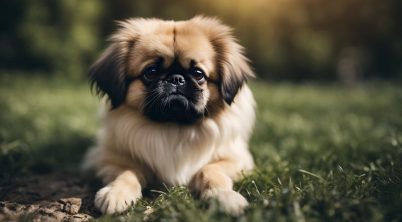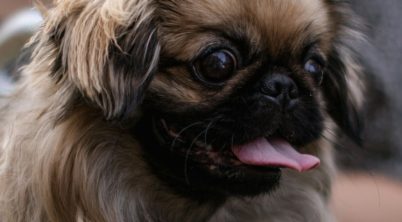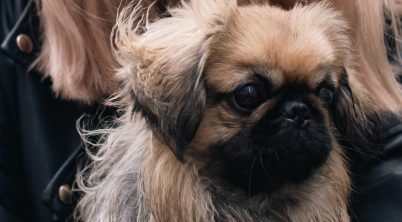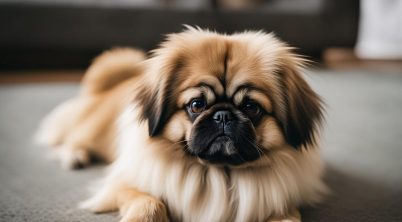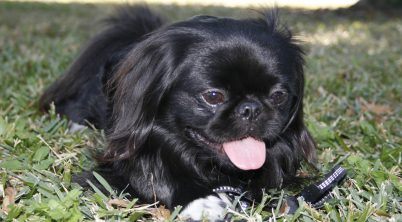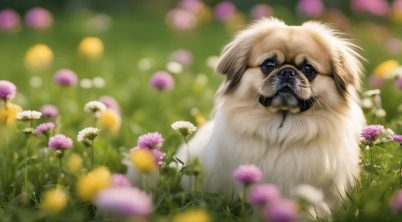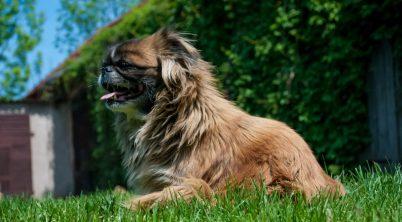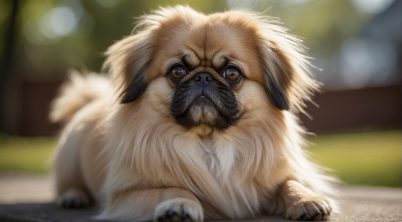Pekingese and Pugs are two distinctive breeds that have captured the hearts of dog lovers around the world. Both breeds hail from ancient China, where they were treasured by nobility—Pekingese were companions to the imperial family, and Pugs were also favored by Chinese emperors. Their shared origin lends itself to the question of whether these dogs have a direct lineage connection.
Despite their common geographical and cultural history, Pekingese and Pugs are not directly related in the way one might assume siblings or parent-child relationships are within immediate family. The Pekingese possesses a long, flowing coat and a distinctly flat face, embodying a lion-like appearance that earned them the moniker “Lion Dogs.” Pugs, on the other hand, are compact with a short muzzle, pronounced wrinkles, and a curly tail, features that have endeared them to many as charming companion animals.
Exploring the connection between Pekingese and Pugs reveals insights into the evolution of dog breeds and the specific traits that have been selected over centuries. Both breeds are brachycephalic, a trait they share due to selective breeding for their flat faces, which can lead to similar health concerns. This physiological resemblance, however, does not signify a close genetic relationship, as each breed has been refined and propagated separately to meet the aesthetic and companionship desires of their human caretakers.
Are Pekingese and Pugs Related?
While Pekingese and Pugs are both small in stature and share a Chinese heritage, their direct relation in terms of breed lineage is more distinctive than ancestral. They originated from China, and both breeds were highly favored by Chinese royalty, which contributes to their shared history of being lap dogs for nobility.
Differences in characteristics:
- Size: Pugs are generally small-sized dogs, while Pekingese are categorized as tiny-sized dogs.
- Temperament: Pekingese might not tolerate children as well as Pugs, who are more child-friendly.
Similar traits include:
- Companion Dogs: Historically bred for companionship, they serve well in a family setting.
- Grooming Needs: High grooming requirements are common among both, with Pugs being slightly easier to groom.
| Feature | Pug | Pekingese |
|---|---|---|
| Size | Small | Tiny |
| Child Friendliness | High | Moderate |
| Grooming | High (slightly easier than Pekingese) | High |
| Origin | China | China |
In essence, Pekingese and Pugs showcase parallel histories of companionship and share some similar grooming and temperament traits, but they are not directly related in terms of breed lineage or development. Each maintains unique physical characteristics and individual breed histories that set them apart beyond their mutual Chinese origins and role as companion animals.
Breed Origins
Both the Pekingese and Pugs have ancient histories that intertwine with the cultural tapestry of China, laying their claim as some of the most historically significant dog breeds. They were cherished by nobility and have a storied lineage that reflects their enduring appeal.
The History of Pekingese
The Pekingese breed has its roots firmly planted in the rich soil of ancient China. Established as a revered companion of the Chinese Imperial court, its name derives from Peking, modern-day Beijing. This breed was so esteemed that it was exclusively owned by Chinese royalty. According to the American Kennel Club, the Pekingese’s history is linked to the palaces of emperors, an illustration of its illustrious past. The Pekingese is said to have played a role in the lives of historical figures such as the dowager empress Tzu-Hsi, who bred them in her royal kennel alongside other breeds.
The History of Pugs
Originating from China as well, Pugs have their own unique place in canine history. With historical accounts suggesting an origin that dates back to 400 B.C., Pugs are believed to have been bred as lapdogs for the Chinese ruling class. Their role was to serve as a companion animal, and they were held in such high regard that they lived luxurious lives with the wealthy. They bear a name that was once “lo-chiang-sze” or “foo dog“, which points to their long-standing presence in Chinese tradition. The breed eventually found its way to Europe, which contributed to its popularity and spread across the world.
Physical Characteristics
When comparing Pekingese and Pugs, their physical attributes are distinctive and telltale, each carrying a unique set of traits that define their breed. Size, coat, and facial features are among the key aspects that differentiate them visually.
Distinctive Features of Pekingese
The Pekingese is characterized by its compact size, with a typical height ranging from 6 to 9 inches and a weight that can reach up to 14 pounds. They exhibit a long, luxurious coat that comes in various shades, including fawn, black, and tan. Notably, they do not have brindle patterns. Their double coat causes frequent shedding, necessitating regular grooming. Pekingese are renowned for their brachycephalic syndrome, due to their flat facial structure, which requires careful monitoring, especially during exercise or in hot weather.
Distinctive Features of Pugs
Pugs are also small in stature, standing between 10 to 13 inches tall and weighing between 14 to 18 pounds. They possess a short coat that comes in fawn, black, and sometimes a brindle pattern, though it is less common. Pugs are known for their distinctive black facial mask. Their short, smooth coat also entails a notable amount of shedding. Similar to Pekingese, Pugs are brachycephalic dogs, which can lead to breathing difficulties and necessitate similar precautions against overheating and strenuous exercise.
Temperament and Personality
When considering the Pekingese and Pugs, prospective pet owners should understand the distinct temperaments and personalities that define these breeds. Both are known to form strong familial bonds and exhibit a companionable nature.
Behavioral Traits of Pekingese
The Pekingese breed is known for its regal demeanor and strong loyalty to their family. This breed can be somewhat aloof, particularly with strangers; they do not seek out affection from just anyone. They are affectionate with their owners and can be quite protective of their family. As a breed that was historically the companion of Chinese emperors, this dog’s stubborn yet dignified personality should come as no surprise. Pekingese are not typically kid-friendly compared to other breeds, as they prefer a quieter and more stable environment without the unpredictability of young children. These traits may make them well-suited for apartment living, though they do have a tendency to bark to alert their family of anything unusual.
Behavioral Traits of Pugs
On the other hand, Pugs are renowned for their amicable and outgoing personalities. They are incredibly affectionate, social, and thrive on attention from their owners and strangers alike, which makes them less protective compared to Pekingese. This breed is known to be very family-friendly and generally good with children, often showing a playful and sometimes clownish behavior. Pugs are highly adaptable and can live happily in both houses and apartments; however, they do require social interaction and do not enjoy being left alone for long periods. Despite their size, they can be fairly vocal, with a tendency to bark, particularly when they want attention or are playing. Stubbornness may sometimes be an issue with Pugs, but with consistent and positive training, they usually respond well.
Both the Pekingese and Pugs are not particularly active, making them suitable companions for less active households. Their intelligence makes them responsive to training, though the Pekingese may require more patience due to his independent nature. The Pug’s enthusiastic temperament may make training a more playful activity. The two breeds share a loyal companionship that many dog lovers seek but show it in different ways reflective of their individual breed characteristics.
Health and Maintenance
Pekingese and Pugs are both brachycephalic breeds with a similar set of potential health issues and maintenance requirements. Addressing these concerns is critical for the well-being of both breeds.
Common Health Issues
Despite their charming appearance, Pekingese and Pugs can suffer from several breed-specific health problems. Brachycephalic Syndrome is prevalent in both breeds due to their flat faces, leading to respiratory difficulties. Owners should look out for symptoms of Brachycephalic Obstructive Airway Syndrome (BOAS) and manage it with veterinary assistance.
Both dog breeds may develop ophthalmic conditions such as corneal ulcers and dry eye, attributable to their prominent eyes. Pekingese may experience patellar luxation, where the kneecap dislodges, while Pugs are susceptible to Pug Dog Encephalitis (PDE), an inflammatory brain disease unique to the breed.
Other health issues include:
- Hip dysplasia: a malformation of the hip joint that can lead to arthritis
- Epilepsy: a neurological disorder that may cause seizures
- Skin allergies: can lead to itching and discomfort, often managed with diet and medication
Grooming and Exercise Needs
Grooming requirements for both Pekingese and Pugs are high. Their double coats shed year-round and require regular brushing to minimize hair accumulation and prevent matting. Pekingese may need more frequent grooming sessions due to their longer coat.
| Grooming Activity | Pekingese | Pug |
|---|---|---|
| Brushing Frequency | Multiple times per week | At least once per week |
| Bathing Frequency | Once a month | When needed |
| Nail Clipping | As needed | As needed |
| Ear Cleaning | Regularly | Regularly |
| Wrinkle Cleaning | Not necessary | Daily, to prevent infection |
Pugs and Pekingese require moderate exercise due to their respective energy levels. As brachycephalic breeds, one should be cautious during exercise, especially in hot or humid conditions, to avoid overheating. A moderate walk and playtime can suffice for their physical needs, but they should be monitored for signs of exhaustion or breathing difficulty.
Their diet should be well-balanced to prevent obesity, a common issue that can exacerbate their health problems. PORTION CONTROL and choice of diet are significant factors that an owner should carefully manage with the guidance of a veterinarian.
Living with Pekingese and Pugs
Living harmoniously with Pekingese and Pugs means understanding their unique characteristics and needs. These breeds have features that make them suitable as companion pets, but they also come with specific care requirements that families must consider to ensure a shared comfortable life.
The Family Life
Pekingese and Pugs typically thrive in a family setting, showing affection to all members and proving themselves to be dedicated companions. They are intelligent breeds that enjoy socialization but require gentle and consistent training from an early age, especially to interact safely with children. Pekingese may show an independent streak, while Pugs often bond deeply with their family, always eager to please. Both breeds appreciate being involved in family activities and can adapt well to being family dogs, though they are not particularly known for guarding or hunting roles.
- Exercise: Moderate daily exercise is sufficient for these small dogs, which can include short walks and playtime.
- Socialization: Positive and early socialization is necessary, ensuring they behave well around other pets and during family gatherings.
Adaptability to Living Environments
Pekingese and Pugs can adapt to various living environments, whether it’s an apartment in the city or a more spacious home in the country. They are small in size, which makes them suitable for apartment living, provided they receive adequate exercise.
- Apartment: Yes, both fit well in apartments due to their size.
- City: They can live comfortably in a city environment; outdoor areas for exercise are beneficial.
- Country: These dogs also enjoy the space a country environment offers, but families must ensure the pets are safe in open areas.
Crucial for both breeds is temperature control, as they can quickly overheat due to their short muzzles. Ensuring a cool living environment and avoiding vigorous exercise during hot weather is vital.
Energy Level: They have moderate energy levels but enjoy being active through play.
It’s important for families to provide not just physical activity, but also mental stimulation, which supports the intelligence of these breeds. A balance of engagement and rest is key, with a comfortable couch for downtime being an important part of their living environment.
Choosing the Right Dog for You
When selecting a dog, it’s essential to consider factors like breed characteristics, trainability, and compatibility with your lifestyle. These details help in making an informed decision that aligns with your family’s needs.
Adoption Considerations
Adopting a Dog: If one is considering adoption, it’s important to understand that many factors impact the behavior and health of a dog outside of breed. Adopting dogs, particularly breeds like Pekingese, Pugs, or their mix known as Puginese, offers the opportunity to give a home to a pet in need. Adopters should inquire about the dog’s history, any known health issues like brachycephalic syndrome prevalent in these breeds, and the temperament of the parents if known. Adoption agencies can also guide prospective owners on how well these dogs adjust to apartment living and if they’re suited for families with children, as these breeds are generally friendly and adaptable to an indoor setting.
| Factors | Considerations When Adopting |
|---|---|
| Lifespan | Pugs and Pekingese typically have a life span of 12-15 years. Puginese may have a similar life expectancy. |
| Kid-Friendly | Pugs are very kid-friendly, while Pekingese are less tolerant; Puginese’s behavior varies. |
| Trainability | Pugs and Pekingese are smart but can be stubborn, affecting trainability. |
| Breed Standards | Confirm with breeders that puppies meet breed standards set by organizations like the American Kennel Club. |
Buying from a Breeder: When purchasing a purebred Pekingese, Pug, or Puginese, one should seek out reputable breeders committed to breeding for health and quality rather than simply for appearance. Prospective buyers must inquire about breed standards, the longevity of the dog’s parents, and potential hereditary issues. Ensuring a breeder meets American Kennel Club standards can be an indicator of attention to quality.
Understanding Breed Standards
The American Kennel Club (AKC) sets standards for breeds, which are guidelines for the ideal characteristics of each breed in terms of appearance, behavior, and temperament.
- Pekingese and Pug Standards: Both the Pekingese and Pug breeds are brachycephalic (having a flat face), which is a standard feature but also a health consideration as it can lead to brachycephalic syndrome.
- Puginese Standards: As a hybrid, the Puginese do not have specific breed standards, but they typically have traits from both Pekingese and Pugs.
Breed standards should be consulted to ensure that the dog one chooses has the characteristics that are ideal for their breed, but it’s equally important to be aware of related health issues.

